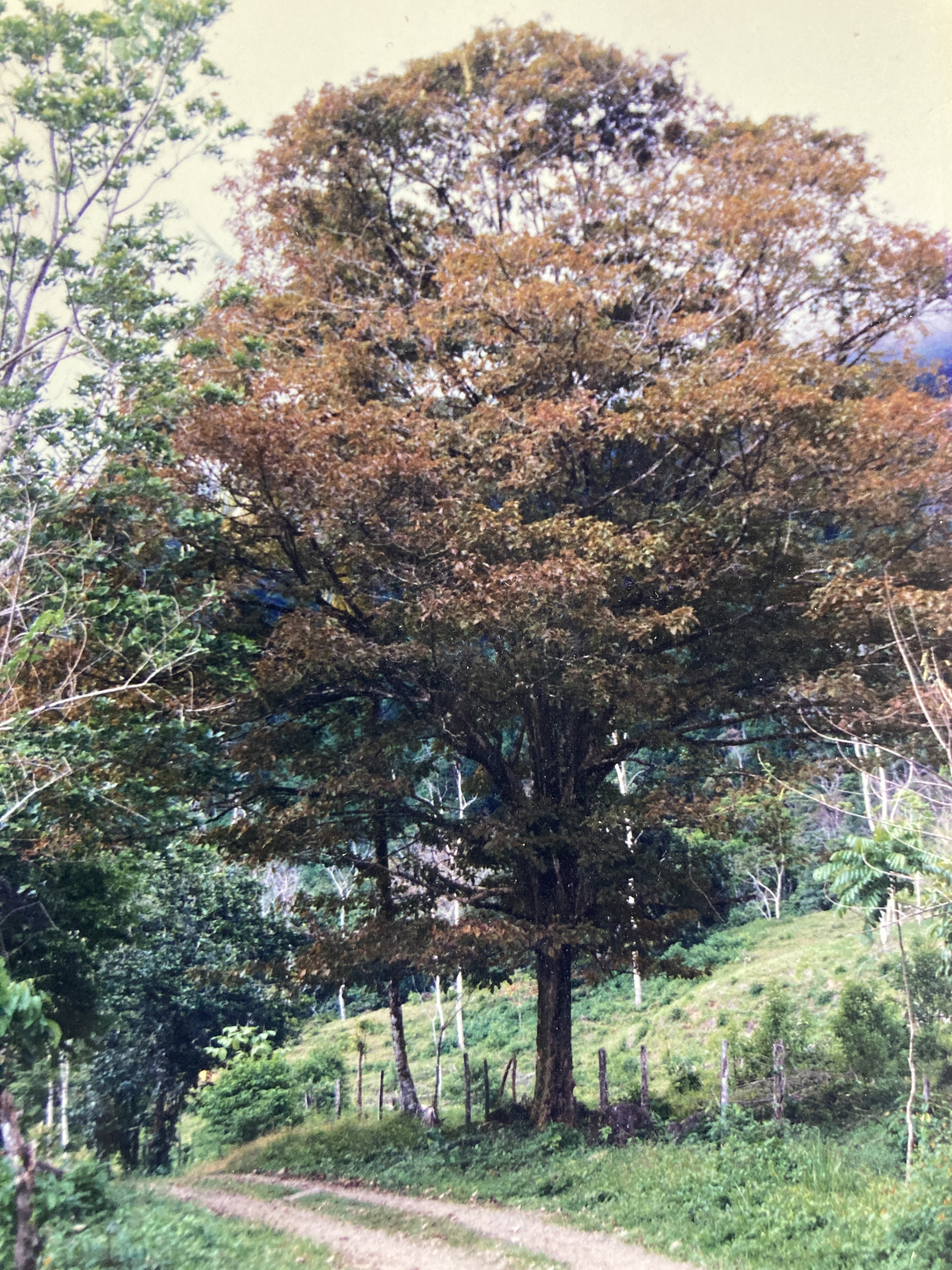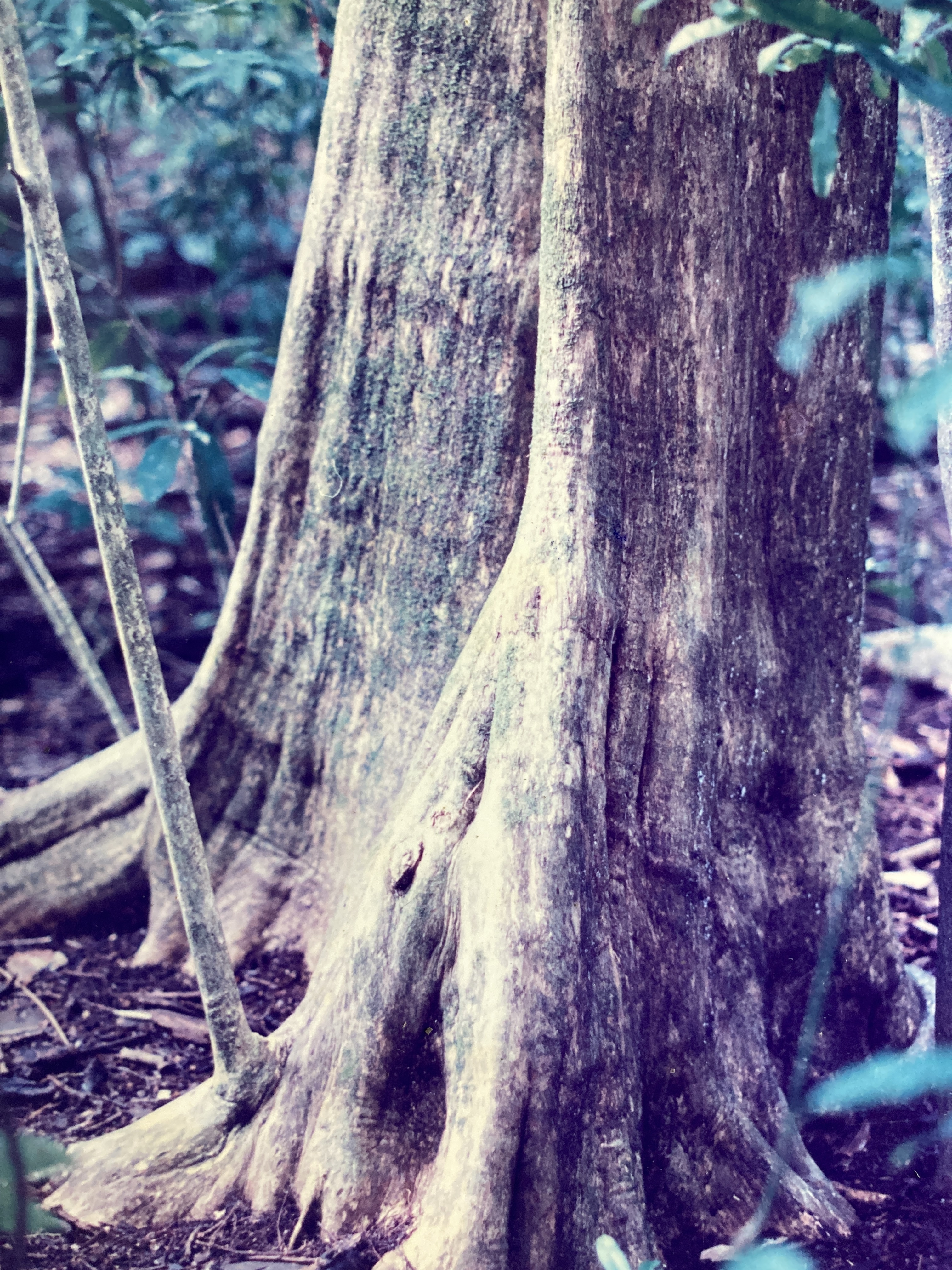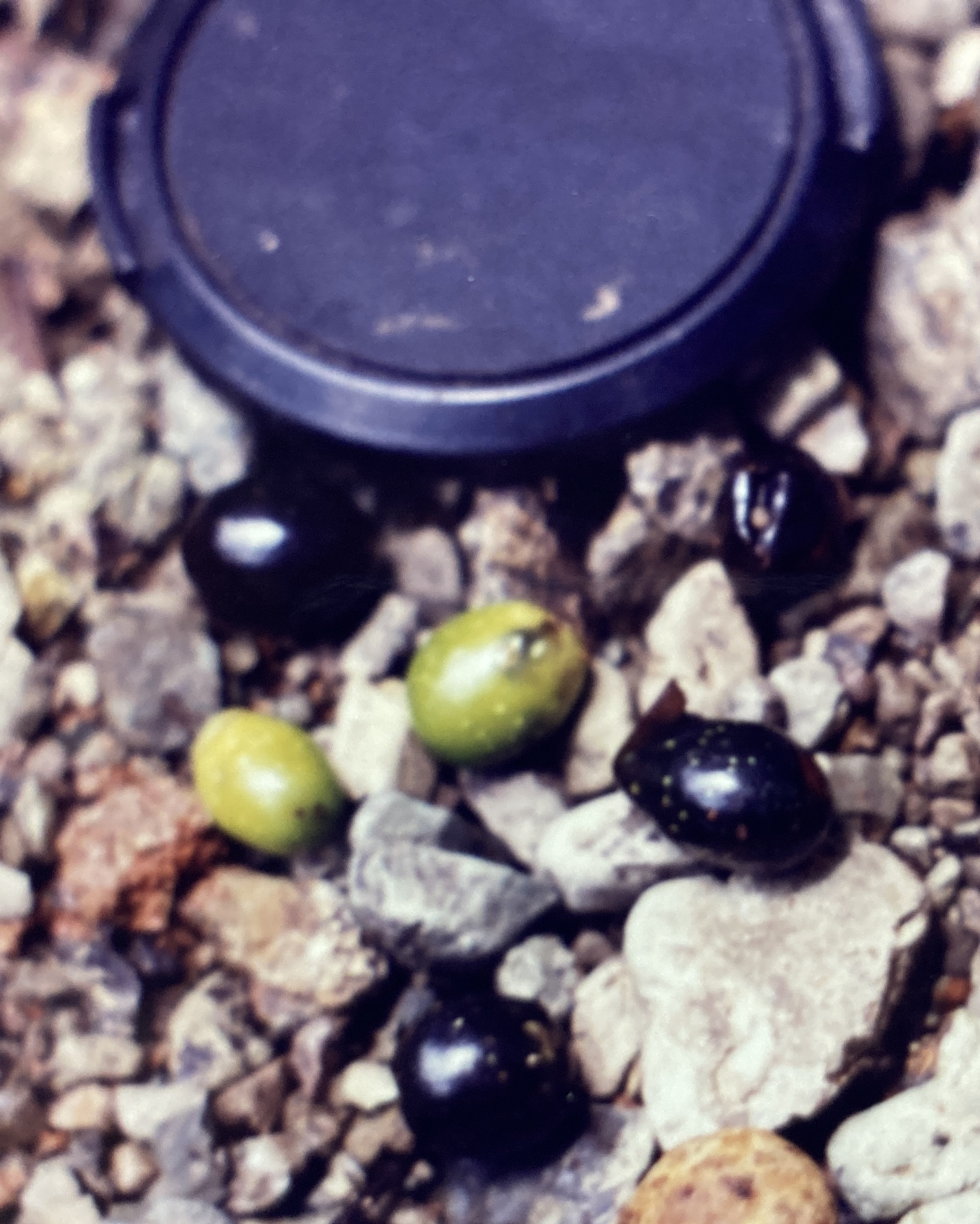Vitex cooperi Standl.
CUAJADA, MANU PLATANO
Occasional evergreen or briefly deciduous subcanopy tree (15-25 m) found in primary and secondary forests where light and moisture levels are high. Appreciated for its amazingly rot-resistant wood, Cuajada has whitish bark and light green, trifoliate leaves that make it an easy species to identify.
Description: Cuajada has a modestly irregular trunk (40 cm) that is often bent or inclined and is never cylindrical. Buttresses are very small or, more usually, lacking entirely and stump sprouts or suckers occasionally grow from the base of the tree. Cuajada bark, a hallmark of the species, has a creme-white color and a finely-grained texture. Thin, vertical cracks divide the cortex into narrow, papery, and exfoliating strips. Often, Cuajada boles are seen to harbor colonies of moist green mosses – making them appear darker in color. Branches typically emerge from the upper third of the trunk and form a narrow, thick crown.
Cuajada leaves are oppositely arranged and compound: possessing an uncommon, trifoliate configuration of leaflets. Variable in size, they average 17 cm in length (including a long, 4 cm petiole) and 8 cm in width. The terminal leaflet is largest, being roughly twice the size of the two lateral leaflets that flank it. All are smooth, entire, and elliptically shaped, with poorly developed drip-tips. Cuajada leaves (and therefore crowns) have a distinct, yellowish cast that make this tree stand out from its predominantly dark-green environment. By late January, an extended period of further leaf yellowing, senescence and slow defoliation begins. This continues until the last of the leaves is shed in May. Leafless for only a week or two, new foliage rapidly begins to emerge this same month, with crowns completely regenerated by June.
Flower buds appear just as foliage growth subsides. Soon, bunches of violet blossoms in long, open, axillary panicles adorn Cuajada canopies. Suspended just beyond the crown, these panicles hold the blossoms in full view of potential pollinators. Each flower (1 cm) boasts a cup-shaped calyx; a tubular corolla (with a fuzzy, yellow core) that flares into five short, violet petals; four curved stamens; and a central pistil. The particular orientation of the five petals (one of which is modified into a wide, fan-like shape) suggests a human form. Flowering periods are annual, though not strongly synchronized. Generally, the first trees begin blossoming in early May while the last ones finish by late June. Individual trees participate for only about three weeks of this interval.
Fruits are plump drupes (1.5 cm by 0.8 cm). Beginning green, they mature deep brown or black (dappled with a dusting of lighter speckles). Each contains a layer of fleshy pulp and a single, narrow seed (1 cm by 0.4 cm), bearing a notch at one end. Though crop size is variable, harvests occur annually during August and early September.
Similar Species: Thanks to its trifoliate, oppositely arranged, and slightly yellowish foliage, Cuajada should not be confused with any other species in Manuel Antonio.
Natural History: Cuajada uses lengthy panicles in order to suspend its flowers and fruits well beyond the obscuring foliage of the crown. This places them where they are easily visible to potential pollinators and seed dispersers. Insects are the most common visitors of Cuajada flowers, while birds eat and scatter its fruits.
Uses: Cuajada is known for its straight-grained wood. Easily split with an ax, Poveda and Holdridge (1975) site “rajatebien” as another common name for this species. When building structures over the damp forest floor, Cuajada is the wood of choice – especially for pilings that must remain in direct contact with the soil. Thanks to its remarkable resistance to bacterial and fungal decay, Cuajada wood may remain strong and intact for decades. Indeed, water bars made from this material and placed along the trail in Punta Catedral over fifteen years ago are still solid today, showing little or no sign of decay. Most other woods, placed in this same warm, moist environment, would rot within a few years.
Distribution: In Manuel Antonio National Park (MANP), Cuajada is found growing as a subcanopy component of the primary forest where individual trees are widely, but thinly, dispersed. It also does well in secondary regimes, even when exposed to full, tropical sunlight. The tree ranges from Guatemala to Colombia.




